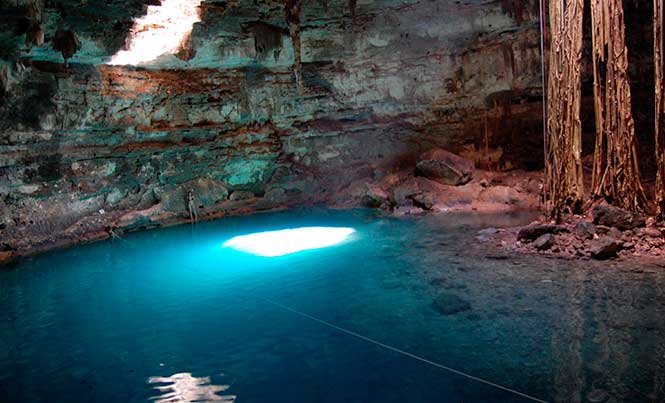
Cenotes are natural sinkholes that have developed over millions of years. No-one knows exactly how many cenotes there are in this area, but I have heard it is probably over 9,000. The name cenote originates from the Maya word “ts’onot” which means a location of accessible groundwater. For the Maya, they were their primary source of water and seen as a portal to Chac, the Rain God and Xibalba, God of the Underworld.
Cenotes are home to species of fish only found in Mexico such as the Mexican Blind Brotula, an albino, sightless fish that inhabits the freshwater layer of cenotes, and mollies, a popular aquarium enthusiasts’ fish. You can also find catfish, so called for the prominent barbels growing near their mouth that resemble whiskers, and members of the angel fish family. During a recent visit to the Jardin del Eden cenote, located between Playa del Carmen and Tulum, I was treated to a free foot spa by the cenote’s nibbling fish!
In 2017, the Ministry of the Environment and Natural Resources (SEMARNAT), started a clean-up project in the cenotes. They are Mexico’s federal government agency responsible for protection, restoration and conservation of this beautiful country’s fragile ecosystem and natural resources. With the collaboration of the local municipalities, divers and volunteers, hazardous waste, garbage, plastic and other pollutants were removed. In 2018 this important work continues alongside an educational program to teach awareness to local communities of the importance of cenotes and how the impact of damaging one can cause a much greater knock-on effect.
Since the 1970s there has been an explosion of tourism in the area. It has put a strain on the cenote ecosystem as the porous limestone rock of the area allows whatever we’re using on the surface to seep through. Sadly, what we use to solve one problem, such as insecticides, will often cause another problem.
The cenotes, jungles, mangroves and coral reefs are all inextricably intertwined and each depends on the other for survival. Cenotes are incredible places to visit, so go and enjoy them, but be respectful of their environment so that generations to come can do the same.